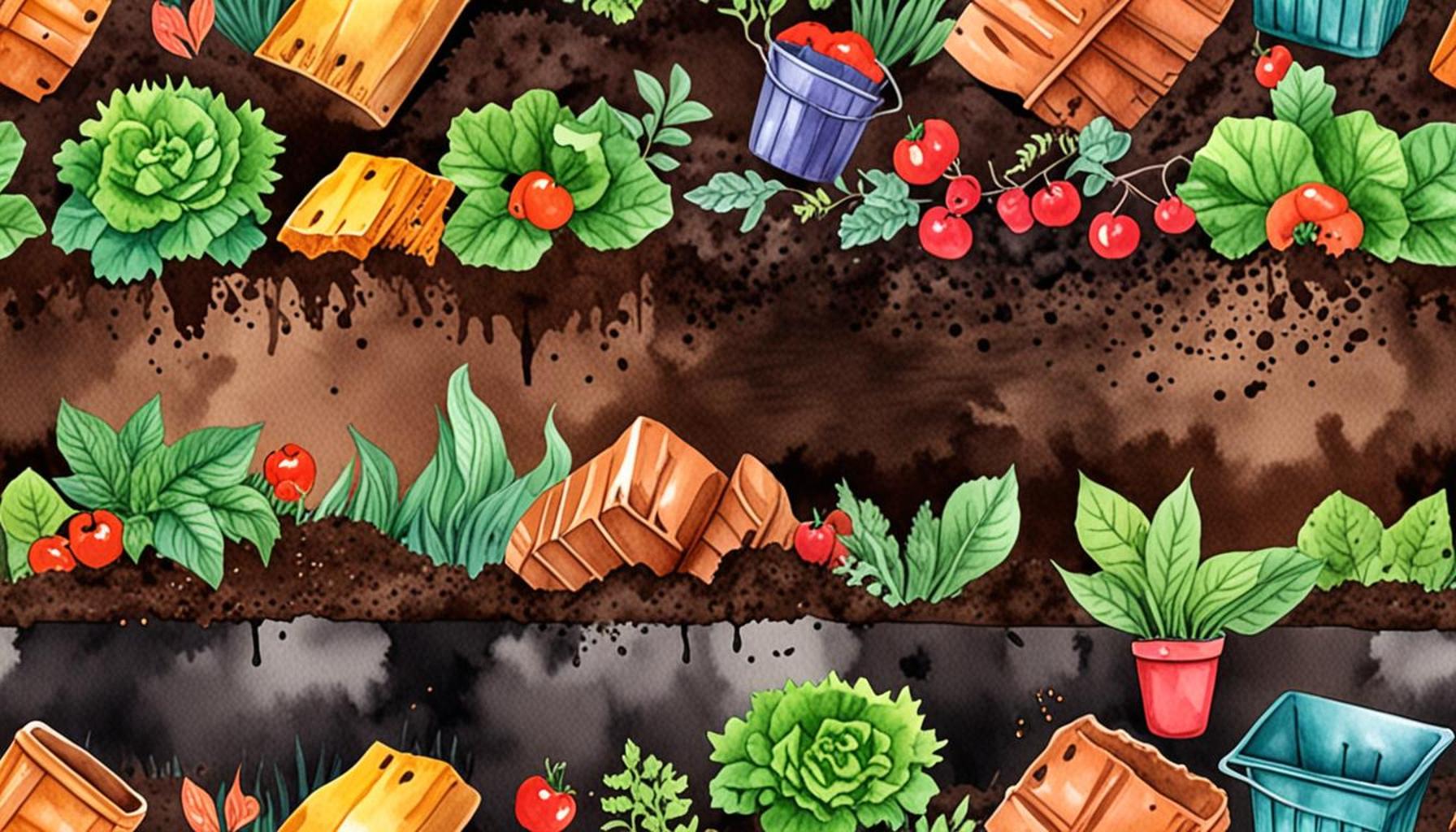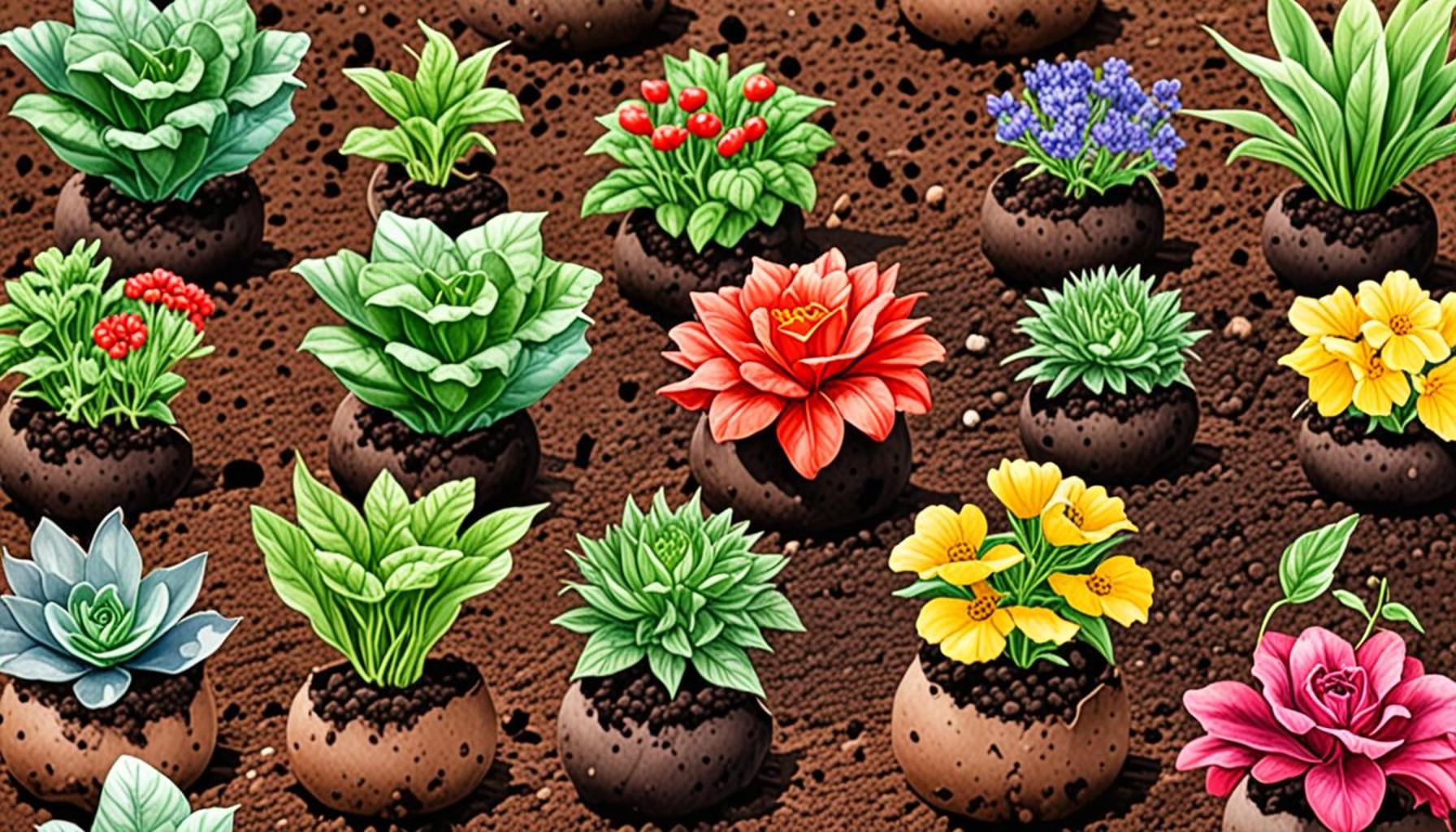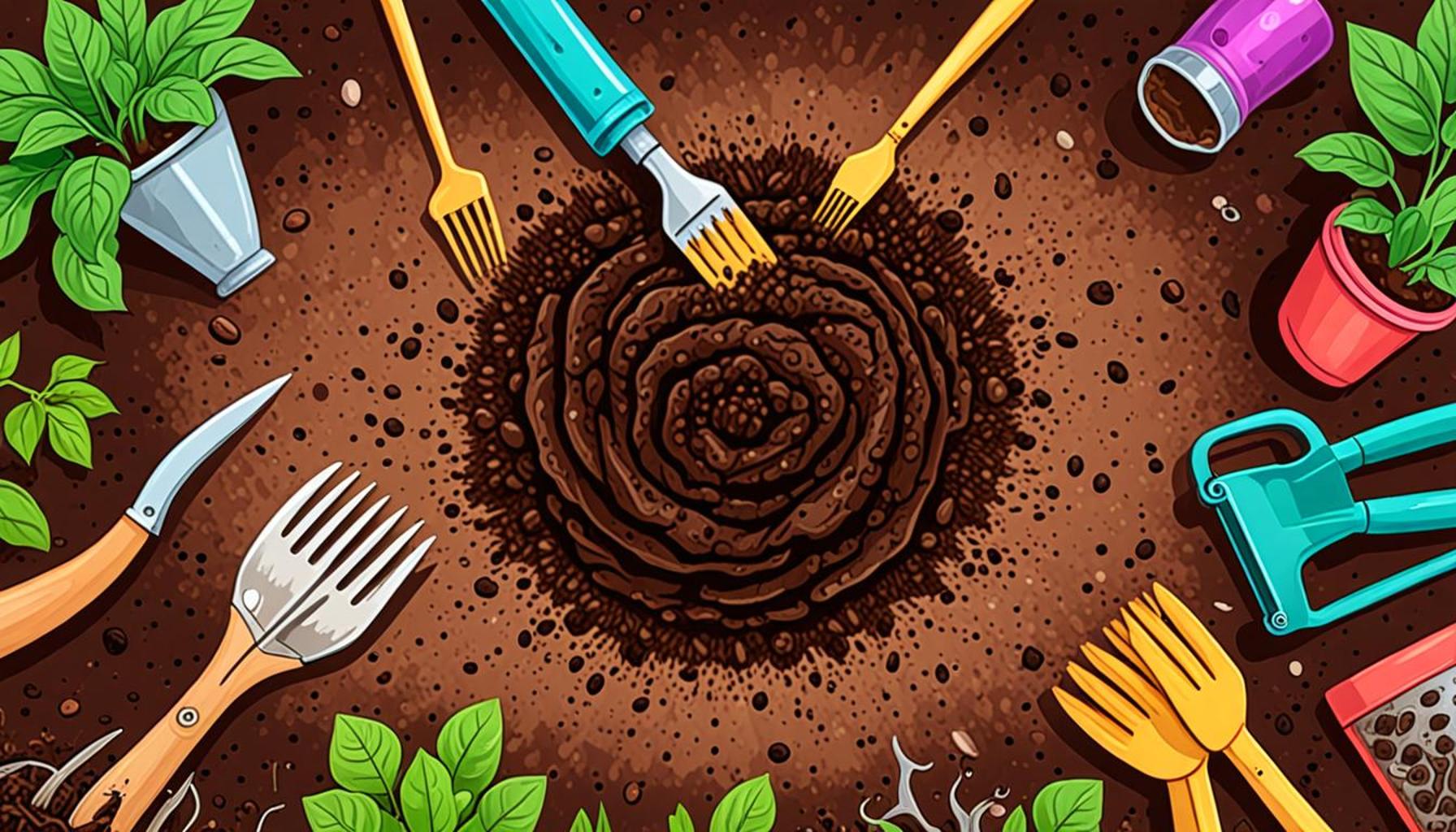The Role of Soil Coverage in Gardening Preparation: Techniques for Beginners

Understanding Soil Coverage in Gardening
For novice gardeners venturing into the vibrant world of horticulture, effectively managing soil coverage is essential for fostering a flourishing garden. The soil serves as the foundation for plant health and growth; thus, employing techniques that promote optimal conditions can yield significantly better results. This article delves into the myriad benefits of soil coverage and offers practical strategies for beginners looking to cultivate their green thumbs.
Why Soil Coverage Matters
Maintaining proper soil coverage is not merely a task—it is a transformative practice that can redefine the success of your gardening endeavors. Below are some key reasons why it deserves your attention:
- Weed Control: One of the most daunting challenges in gardening is managing weed growth. Soil coverage creates a barrier that suppresses weeds, minimizing their competition for vital nutrients, sunlight, and water. This can be particularly effective with natural materials like shredded bark or wood chips, which not only deter weeds but also add organic matter to the soil as they decompose.
- Moisture Retention: A well-placed layer of mulch or organic matter can work wonders for moisture management. In regions with fluctuating weather patterns, such as much of the United States, a protective layer over the soil reduces water evaporation. This keeps the soil consistently moist, providing an ideal environment for plant roots to thrive. During particularly hot months or drought conditions, you will see a marked difference in how your plants respond.
- Soil Temperature Regulation: Just as humans seek comfortable environments, plants do too. Soil coverage helps shield the soil from extreme temperatures—both cold and hot—which can be detrimental to plant health. In colder regions, a thick layer of mulch can insulate the soil, preventing frost damage, while in warmer areas, it can keep soil temperatures stable, fostering healthy growth.
For beginners, understanding and applying soil coverage techniques can lay a strong foundation for successful gardening. By incorporating materials such as organic mulch (like straw, leaves, or compost) or implementing cover crops (such as clover), novice gardeners can create a supportive ecosystem for their plants. These practices not only suppress weeds and enhance moisture retention but also contribute to soil fertility by enriching the soil as these materials break down.
Looking Ahead
As you embark on your gardening journey, exploring soil coverage techniques will open doors to greater yields and a more sustainable approach to gardening. For example, in a typical Midwestern garden, utilizing cover crops during the off-season can replenish nutrients and prevent soil erosion. Are you eager to discover practical strategies that will elevate your gardening efforts? Let’s dig in and navigate the enriching realm of soil coverage together!
DISCOVER MORE: Click here to enhance your herb harvesting skills
Essential Soil Coverage Techniques for Beginner Gardeners
As you step into the captivating realm of gardening, the importance of soil coverage cannot be overstated. Understanding how to effectively manage this critical aspect of gardening can mean the difference between a struggling patch and a verdant paradise. To help you on your journey of cultivating your green thumb, we will explore various techniques of soil coverage that are particularly suited for beginners.
Types of Soil Coverage Materials
When considering soil coverage, selecting the right materials is paramount. Here are some commonly used options that can cater to different gardening needs:
- Organic Mulch: Materials such as shredded leaves, straw, and grass clippings act as a natural barrier to weeds while enriching the soil over time. As they decompose, they release nutrients that enhance soil fertility, promoting healthy plant growth.
- Inorganic Mulch: Options like landscape fabric, rocks, or plastic coverings can be an effective weed preventive. While they do not improve soil fertility like organic materials, they provide excellent long-term weed control and maintain moisture, making them a suitable choice for beginners seeking low-maintenance solutions.
- Cover Crops: Planting cover crops such as clover or vetch during the off-season not only helps prevent soil erosion but also enriches the soil with nitrogen. This practice is particularly beneficial in regions where soil fertility is a concern, as it allows for natural soil enhancement through biomass addition.
Application Techniques for Optimal Results
Once you have selected your soil coverage materials, proper application techniques will ensure you maximize their benefits. Here are some practical tips for beginners:
- Layer Thickness: Applying a layer of mulch or organic matter about 2-4 inches thick is usually ideal. This thickness strikes a balance between effective weed suppression and water retention without suffocating the soil beneath.
- Consistent Maintenance: Regularly check and replenish your soil coverage materials, as organic mulches break down over time. Keeping the layer replenished ensures ongoing protection from weeds and maintains the desired soil moisture levels.
- Strategic Placement: Be mindful of where you place your soil coverage. Avoid covering the base of plant stems, as this can encourage rot. Instead, leave a small space around the plants to promote air circulation while still benefiting from the advantages of coverage.
By adopting these soil coverage techniques, beginners can build a robust foundation for healthy gardening practices. Not only will they facilitate better growth and productivity, but they will also enhance your overall gardening experience, making it more enjoyable and rewarding.
When preparing your garden, understanding the importance of soil coverage is crucial for ensuring a thriving ecosystem. Gardeners, particularly beginners, can significantly benefit from integrating various soil coverage techniques that not only protect the garden but also enhance its productivity.One of the primary techniques for soil coverage is the use of mulch. Organic mulch, such as wood chips, straw, or grass clippings, provides a protective layer over the soil. It helps reduce evaporation, maintaining soil moisture during hot months. Additionally, mulch prevents weed growth, allowing plants to compete better for nutrients. As it breaks down, organic mulch enriches the soil with nutrients, further supporting plant health. This practice is especially beneficial for beginners who might be dealing with nutrient-poor soil. Moreover, ground cover plants are another excellent option for soil coverage. These low-growing plants, such as clover or creeping thyme, spread across the ground, providing a green blanket that reduces erosion and suppresses weeds. Ground covers help retain moisture in the soil and can add aesthetic value to the garden, creating a lush look even when other plants are not in bloom.Implementing these soil coverage techniques can markedly improve soil structure and increase organic matter, which is vital for nurturing healthy plants. For beginners, embracing these agile strategies can lead to a more productive gardening experience while minimizing common pitfalls.Furthermore, utilizing cover crops in off-seasons can help enrich soil health. These crops, such as legumes, naturally fix nitrogen in the soil, providing essential nutrients for the following planting season. Besides, cover crops, when tilled back into the soil, enhance its organic content, leading to greater fertility and resilience.Another aspect is the proper layering of materials in your garden beds. A good understanding of the layering method—such as the lasagna gardening technique—can optimize soil coverage. Layering involves alternating browns (carbon-rich materials) and greens (nitrogen-rich materials), promoting a rich compost effect that supports soil life, attracts beneficial insects, and improves overall garden productivity.With these techniques in hand, beginners can confidently venture into the world of gardening, ensuring their gardens not only survive but thrive. Delving deeper into the science of soil coverage will arm you with the skills necessary to cultivate a flourishing landscape, setting the stage for sustainable gardening practices that contribute to environmental health.
DISCOVER MORE: Click here for expert tips on soil layering
The Impact of Soil Coverage on Plant Health and Growth
As beginner gardeners embark on their journey into the world of horticulture, grasping the role of soil coverage in enhancing plant health and growth is crucial. Soil coverage not only protects but also stimulates the thriving ecosystem within the garden. Understanding its broader impact can significantly shape your gardening practices and leads to lush, robust plant life.
Soil Temperature Regulation
One of the remarkable benefits of soil coverage is its ability to regulate soil temperature. A layer of mulch can act as an insulator, keeping the soil cooler during hot summer days and warmer in the chilly nights of spring and fall. This stabilization of soil temperatures creates a more favorable environment for root systems to thrive. For example, regions with fluctuating temperatures can particularly benefit from this technique, as it enhances root growth and supports plant resilience. Consequently, plants can allocate more energy toward growth rather than survival, contributing to a healthier garden overall.
Moisture Conservation Techniques
Another significant advantage of effective soil coverage is moisture conservation. In the often arid conditions of the United States, maintaining adequate soil moisture is paramount for plant vitality. Soil coverage minimizes evaporation rates by shielding the soil from direct sunlight and wind. For instance, grass clippings and straw create a protective layer that retains moisture and reduces the need for frequent watering. This practice not only conserves water but also translates to reduced labor and resource costs for beginner gardeners, making it an essential technique.
Enhancing Soil Structure and Biodiversity
The introduction of soil coverage also contributes to enhancing soil structure and promoting biodiversity within the garden ecosystem. Organic mulches, like wood chips or compost, gradually decompose, improving soil texture and nutrient content over time. As they break down, these materials attract various soil organisms, such as earthworms and beneficial microbes, which play a pivotal role in nutrient cycling and aerating the soil. Studies indicate that incorporating organic matter can increase soil organic carbon, ultimately fostering greater microbial diversity. For beginners, understanding these concepts will not only enrich their soil quality but also empower them to create thriving environments for plants and pollinators alike.
Weed Suppression: A Gardener’s Best Friend
Weeds are often the bane of beginner gardeners, competing fiercely with cultivated plants for resources. Soil coverage serves as an effective barrier against these unwanted intruders. A robust layer of organic mulch or even a well-placed landscape fabric can limit light access to weeds, significantly reducing their germination and growth. For those starting with small spaces, this can save countless hours of weeding and back-breaking labor. Furthermore, reducing weeds allows plants to grow more vigorously, ensuring that they receive the nutrients and water they need without competing for resources.
Ultimately, the role of soil coverage extends far beyond mere aesthetics; it is an investment in the health and sustainability of your garden. By employing these techniques and understanding their advantages, beginner gardeners are better positioned to nurture a flourishing environment for their plants, setting the stage for burgeoning growth and successful gardening endeavors.
LEARN MORE: Click here to discover the essential tools for soil preparation!
Conclusion: Embracing Soil Coverage for Successful Gardening
In conclusion, understanding the role of soil coverage is fundamental for beginners eager to cultivate thriving gardens. By implementing effective coverage techniques, novice gardeners can enhance plant health, conserve vital moisture, and improve soil structure—all essential elements for fostering a resilient garden ecosystem. With soil temperature regulation, weeds kept at bay, and biodiversity flourishing beneath the surface, the groundwork for a successful garden becomes not just a possibility, but a certainty.
As you embark on your gardening journey, consider exploring various materials for soil coverage, such as organic mulches like straw, wood chips, or even compost. These not only deliver benefits in terms of moisture retention and weed suppression but also contribute to the overall health of your soil. Every layer adds to a dynamic environment, promoting beneficial organisms that will ultimately nourish your plants.
Moreover, embracing soil coverage practices encourages sustainability and resource conservation—key aspects of modern gardening that resonate across the United States. By lessening the need for excessive watering or chemical herbicides, you align your gardening efforts with environmentally friendly practices.
Ultimately, the insights gained from understanding soil coverage can equip you with the tools necessary for creating a flourishing garden space. As you grow your plants, remember that the foundation of their success lies beneath the surface, waiting to be nurtured. Dive deeper into these techniques, and watch your garden thrive like never before.


